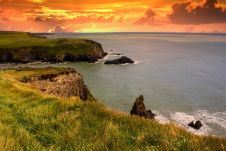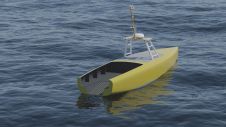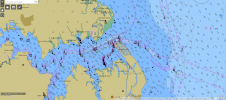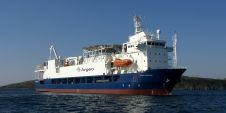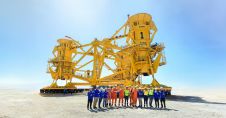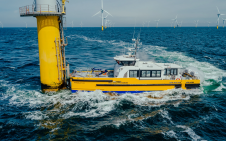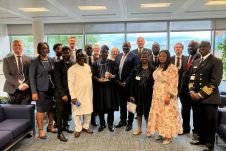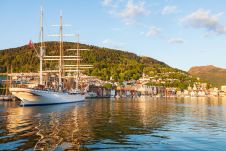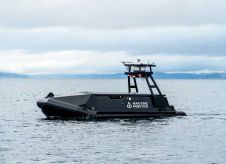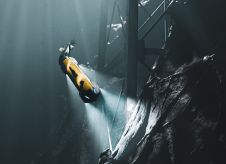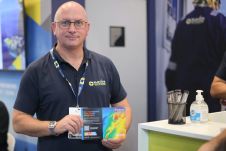Australasian Hydrographic Society
News
The Australasian Hydrographic Society Education Award of AUD$ 2500 for the academic year 2004 has been granted to Wellington, New Zealand-born Miss Lydia Taylor, from the University of Sydney Institute of Marine Science, who is participating in a study of the Kenn Plateau for her Honours year. In May 2004 she will be embarked in RV Southern Surveyor for a 25-day cruise which has as its aim the improving of our understanding of the geological evolution, modern environmental setting and resource potential of this large submerged continental block, about which little is currently known. The internationally respected Dr Neville Exon will lead the cruise; he is Senior Principal Research Scientist, Petroleum & Marine Division, Geoscience Australia.
The Kenn Plateau lies off the northeastern Australian coast (20° to 27° South, 154° to 159° East) in a region characterised by a series of prominent bathymetric troughs and marginal plateaux. These regional features cover an area of more than 400,000km2, submerged by from 1,000m to over 3,000m of water. On this feature sits the Kenn Plateau, which lies within Australia's EEZ and alone covers around 100,000km2, an area larger than the Tasmanian landmass. Various islands and reefs, whose origin is possibly related to the Tasmantid Chain of volcanic seamounts, lie along the western margin of the Kenn Plateau and include the well-known Kenn Reef and Bird and Cato Islands.
The Kenn Plateau is thought to have formed as a sliver of continental crust resulting from the rifting and seafloor spreading that occurred between 95 and 52 million years ago along the eastern Australian margin forming the Tasman and Coral Sea basins (Gaina et al., 1999). The plateau lies in a pivotal position at a junction between these basins and it is also the southernmost of the continental fragments, possessing a distinctly different shape from the Lord Howe Rise block. This makes it an important piece in the jigsaw of tectonic reconstruction in the southwest Pacific and its pre-break-up juxtaposition to the Maryborough Basin, which contains natural gas, supports the possibility of hydrocarbon potential.
During the cruise, 3,200km of high-resolution seismic data will be acquired, as well as bathymetric and magnetic profiling and swath mapping that will contribute to establishing the broad plateau structure. Forty dredge samples taken along the steep slopes, canyons and the slopes of Cato and Bird Islands for basement, volcanic and outcropping sediments will provide information about the early history of the plateau. Ten soft-sediment cores and fifteen grab samples of modern and shallow sub-surface successions will provide information about recent environment and sedimentation processes. Results from the cruise will contribute towards regional knowledge and provide assistance in developing an effective marine management plan for the northeastern region of Australia.
Additional participating principal investigators will be Dr Dietmar Müller (University of Sydney, Institute of Marine Sciences) and Mr Peter Hill (Geoscience Australia).
Australasian & Regional Awards
With the founding of the Australasian Hydrographic Society, the Council decided that it would be appropriate to award various Certificates of Recognition to AHS members and some special non-members. These will be in recognition of long and/or distinguished service to the Society, including service to the former Australasian Branch of the Hydrographic Society and to Hydrography as a profession.
The first of these Australasian and Regional Awards were presented during the formal Hydro 2003 Dinner, held at the Antarctic Centre, Christ-church, New Zealand in November 2003. The following were recipients: Tony Nusco, (EAR Award). Career Achievement for Hydrographic Fieldwork: Stephen Holtznagel, (EAR Award). Scientific & Career Achievement in Coastal Management: Gavin Abbott (Australasian Award). Industry Achievement in the Private Sector: John McCarthy (Australasian Award). Career Achievement in Support of Hydrography: Ray Gillbanks (Australasian Award). Career Achievement in Hydrography: Michael Calder (Australasian Award), Service Achievement in Treasury, the Service Achievement Award is the second highest award granted by the AHS. Ron Whitmore (Australasian Award) was made Member Emeritus. In addition, The President's Award of Appreciation went to the Hydro 2003 Organising Committee comprised of Maurice Perwick, (Convenor), Neville Ching, Peter Knight, Cedric Trounson, Gary Chisholm, David Mundy, Ron Tyson and Michael Calder.
Contact
Australasian Hydrographic Society
Att. E.R. Whitmore
4/6 Carrington Street
Wahroonga,
New South Wales 2076
Australia
Tel: +61 2 94892091
Fax: +61 2 94892048

Value staying current with hydrography?
Stay on the map with our expertly curated newsletters.
We provide educational insights, industry updates, and inspiring stories from the world of hydrography to help you learn, grow, and navigate your field with confidence. Don't miss out - subscribe today and ensure you're always informed, educated, and inspired by the latest in hydrographic technology and research.
Choose your newsletter(s)

